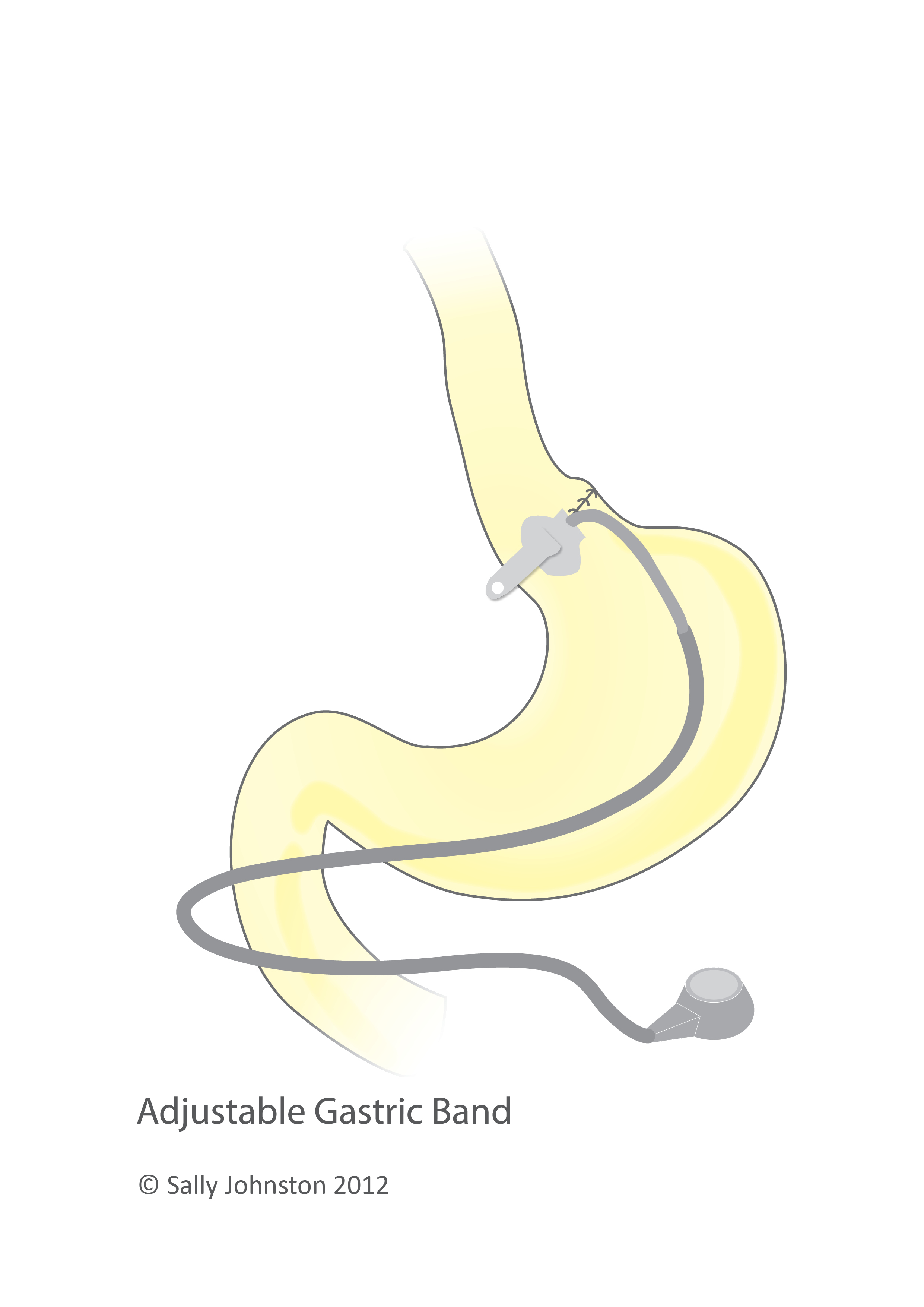How does a gastric band REALLY work?

I have found that sadly there are a lot of misconceptions around gastric bands. Firstly, there is a misconception that the gastric band creates a small stomach that must be ‘filled’ to feel full. There is also a misconception that a tighter band will result in more weight loss and that the vomitting or regurgitation caused by a tight gastric band is ‘normal’. Another misconception is that you shouldn’t be able to eat certain foods with a gastric band.
Let’s get back to basics to understand how a gastric band should work. A gastric band is a silicone device placed around the upper part of the stomach. It was once believed that the gastric band created a new, smaller stomach above the band, where food would sit before passing into the lower, larger stomach. Recent studies at the Centre for Obesity Research and Education (CORE) in Melbourne have shown this to be incorrect.
The gastric band actually creates a ‘funnel’ into the larger stomach and exerts pressure on the stomach. Adjusting the gastric band can vary this pressure. The band has an access point called a port, which is stitched to your abdominal muscle deep under the skin. You can usually tell where the port may be as it is likely to sit somewhere under your biggest scar. Your surgeon or weight loss GP uses the port to adjust your gastric band and vary the pressure it places on the stomach. They can inject or remove saline (a salty water) solution via the port to make your band tighter or looser.
When food is eaten our oesophagus, or food pipe, squeezes bites of food down towards the band. Once food reaches the band, contractions of the oesophagus, called peristalsis, will squeeze well-chewed food past the band. In a person with a well-adjusted band, it can take between two to six squeezes of the oesophagus to get a bite of food across the band. One study suggests this process takes at least a minute.
There are nerves in the stomach that detect when our stomach is stretching, and send a message to our brain that we have had enough to eat. One particular nerve involved in controlling our stomach is called the vagus nerve. With a gastric band sitting around the stomach this squeezes the vagus nerve all the time, and more so when you are eating.
The squeezing process triggers a signal to the brain that you are satisfied, or no longer hungry. This means you feel satisfied on a smaller amount of food than you would have prior to surgery. The constant pressure of the band on the stomach also helps you to feel satisfied for a longer period of time, reducing hunger throughout the day.
Feeling satisfied is different to feeling ‘full’. Feeling ‘full’ means you have eaten to excess. It may indicate food is sitting above the band, either due to eating too quickly, eating large pieces of food or not chewing food well enough. Try to stop eating when you feel satisfied or no longer hungry, rather than full.
Each bite of food must be small and well chewed. An empty, or uninflated band has an opening the size of a twenty-cent piece. A fully inflated band has an opening the size of a five-cent piece. Most people will have their band adjusted somewhere between the two sizes. If you cut food into the size of a five-cent piece size and chew it well, it is more likely to pass comfortably through the band.
Eating slowly also helps you to eat comfortably. In theory, you should aim to wait a minute between each mouthful of food, however it is not practical to time every mouthful. It is practical to put your cutlery down between mouthfuls and wait until you have swallowed before cutting the next piece of food ready to eat. People with a gastric band who eat quickly, describe a feeling of discomfort in their oesophagus, like a ‘traffic jam’. Eating slowly will help avoid this.
I hope this clarifies how a gastric band works and what you should experience. If your band is not acting like it should, please follow up with your support team.
Thanks Carolinagirl,
I love the quote on your footer! I shared it on my Facebook page recently and it was very popular.
You can see my page at www.facebook.com/NutritionforWLS
Sally
Thank you for the extra insight. I've been banded about 7 weeks now. This was helpful information.
Hi B-52,
I have not had weight loss surgery. I am a dietitian who has worked with hundreds of weight loss surgery patients. I synthesise the learnings from the most recent medical literature with my clients experience to provide advice, support and guidance.
Thanks for reading,
Sally
The only thing I know is that it works for me!
sally
i was humbled to see your post on here and on your FB page about
(my quote)...thank you for that.......its the truth...
i fell if more people would (let) the band work/do its job, and them do their part
and not expect a walking on Water overnight miracle, i am sure this surgery, the one that GAVE me
my life back, wouldnt get such a bad name.......
todays world, reality is quick...
if the bad dont work quick eough, off to the next fix.....
i am again thank you for a great post
and will add your info to my blog on wordpress ![]()
Thanks Carolinagirl,
I love the quote on your footer! I shared it on my Facebook page recently and it was very popular.
You can see my page at www.facebook.com/NutritionforWLS
Sally
Edited by ☠carolinagirl☠
Thanks for sharing. I've been banded since 8/24/10...i have not had any problems yet. Had to fills and some taken out of one of those fills. I started at 300 now 215 my weight goes up and down. My goal weight would be 175. I'm feeling great and looking fabulous.
Happy Banding








☠carolinagirl☠ 18,722
Posted
thank YOU for posting this.
Share this comment
Link to comment
Share on other sites